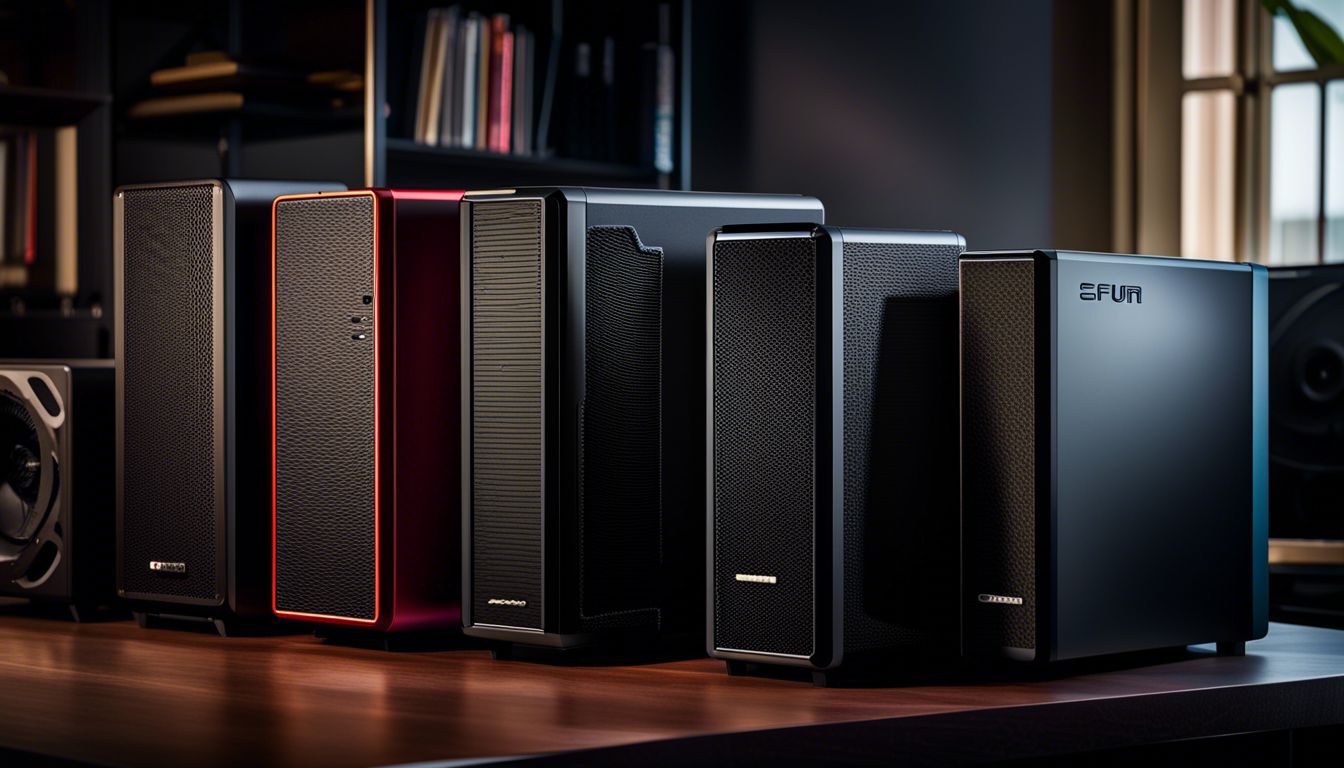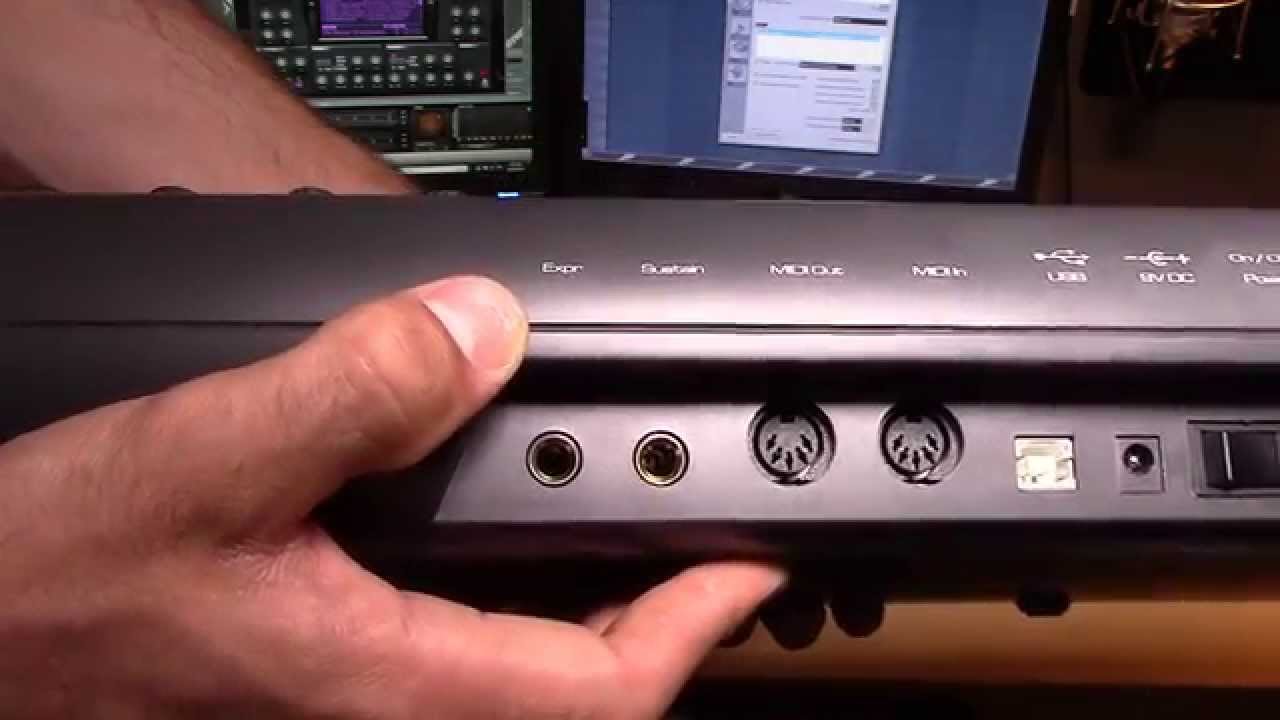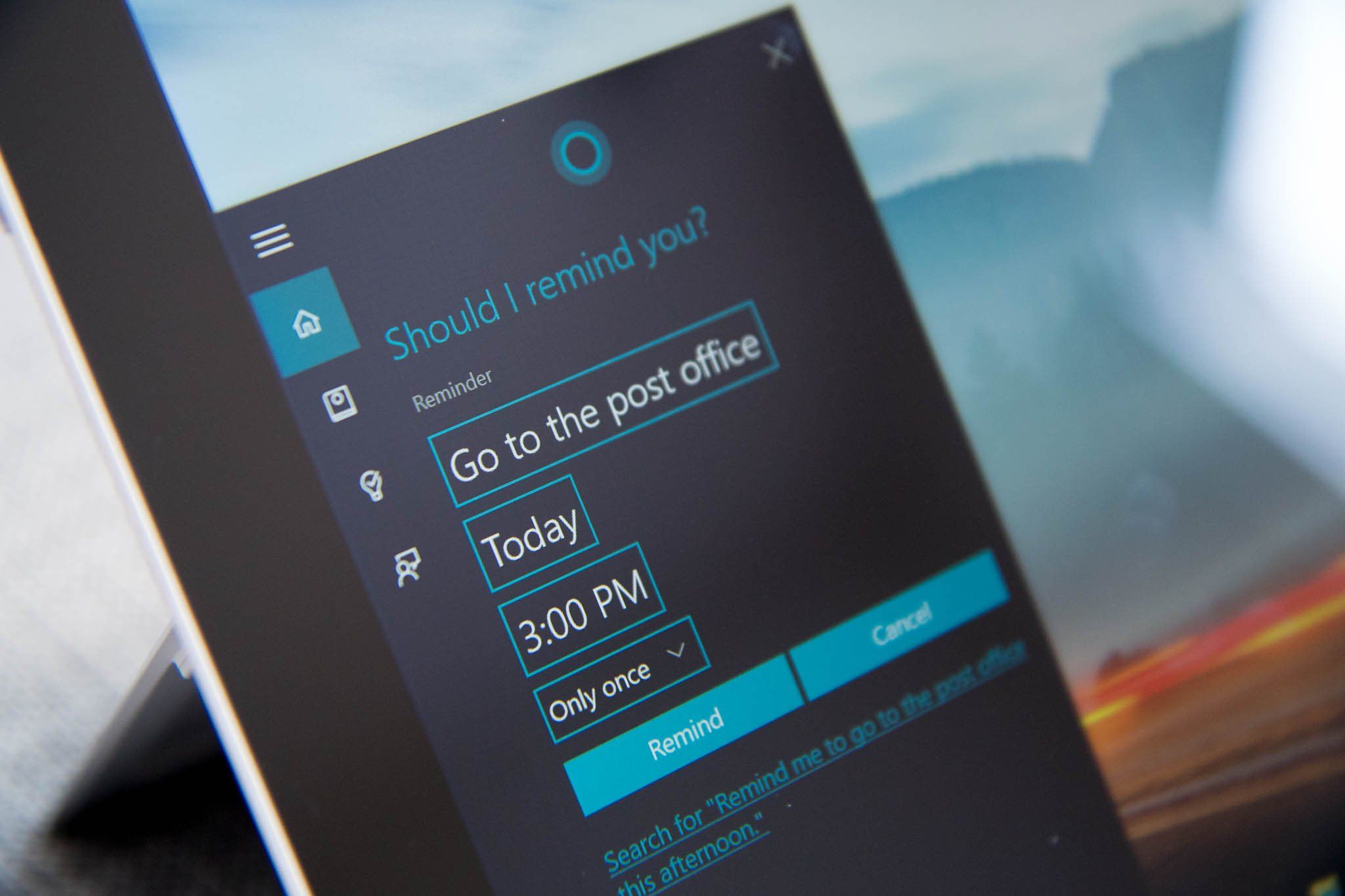Introduction
In the world of computers, there’s a lot going on inside that shiny PC case. But have you ever wondered if your PC case has a speaker? You may be familiar with the speakers that you use to listen to music or watch movies, but did you know that your PC case can also have its own speaker?
The purpose of a PC case speaker is not for playing music or enhancing your gaming experience. Instead, it serves a much more important function. The speaker in your PC case is primarily used for audio feedback, specifically to alert you about certain events or errors that occur during the computer’s operation.
When you power on your computer, the motherboard, which is the central hub of all the computer’s components, goes through a series of checks called the Power-On Self Test (POST). During this process, various components are tested, and if a problem is detected, the motherboard uses the PC case speaker to emit a series of audible beep codes to signal the issue to the user.
Having a PC case speaker can be incredibly useful, as it allows you to diagnose and troubleshoot any hardware or software problems that may arise. So, how can you determine if your PC case has a speaker? In this article, we will guide you through several methods to check for the presence of a speaker in your PC case, ensuring that you’re equipped to handle any potential issues that may arise.
Understanding the Purpose of a PC Case Speaker
Before delving into the methods of checking for a PC case speaker, it’s crucial to understand why this component is essential in a computer system. As mentioned earlier, the PC case speaker plays a vital role in providing audio feedback during the Power-On Self Test (POST) process.
The POST is a series of diagnostic tests that the computer performs each time it starts up. These tests ensure that all hardware components, such as the CPU, RAM, and graphics card, are functioning correctly. If any issues are detected during this process, the POST generates a beep code and sends it to the PC case speaker.
These beep codes are an audible form of communication between the computer and the user, signaling potential hardware or software problems. Each beep code pattern represents a specific error or condition that needs attention. By listening to the beep codes, you can pinpoint the source of the issue and take appropriate steps to resolve it.
For example, a single beep generally indicates a successful POST with no errors. However, different beep patterns and lengths can signify different problems. For instance, continuous beeping might indicate a RAM issue, while a pattern of short and long beeps might indicate a problem with the graphics card.
By having a PC case speaker, you can troubleshoot hardware failures or conflicts even without a display. This is especially helpful in cases where your computer doesn’t boot or encounters errors that prevent it from displaying anything on the monitor. The audible beep codes can guide you to the specific issue, allowing you to take the necessary action to resolve it.
It’s worth noting that not all PC cases come with a built-in speaker. Some manufacturers may exclude the speaker to cut costs, assuming that users will rely on visual cues or error messages on the screen to identify any problems. In such cases, you may need to purchase a separate speaker or use alternative methods like LED indicators or diagnostic software to troubleshoot your system.
Now that you understand the importance of a PC case speaker, let’s explore different methods to determine if your PC case has one.
Checking for a Speaker
Now that you recognize the significance of a PC case speaker, it’s time to determine if your computer has one. Fortunately, there are several methods to check for the presence of a speaker in your PC case. Let’s explore these methods:
Method 1: Physical Inspection
An initial step in checking for a PC case speaker is to physically examine your computer case. Look for a small circular or rectangular speaker located inside the case. It is usually connected to the motherboard or a separate speaker header on the motherboard. Additionally, check around the front panel or on the motherboard for any labels or markings indicating the speaker’s presence. Keep in mind that not all cases have visible speakers, so if you don’t see one, move on to the next method.
Method 2: Checking the Motherboard Connections
If you couldn’t locate a speaker by visually inspecting the case, you can check the motherboard connections to verify if a speaker is connected. The speaker connector is typically a two-pin connector labeled “Speaker” or “SPK” on the motherboard. Refer to the motherboard manual or manufacturer’s website for specific instructions on locating this connector. If you find the connector and a speaker is connected, then your PC case indeed has a built-in speaker.
Method 3: Reviewing the PC Case Manual
If you’re still uncertain about the presence of a speaker, consult the manual or documentation that came with your PC case. The manual usually provides detailed information about the components included with the case, including whether it has a built-in speaker. Look for any references to a speaker or audio indicator in the manual.
Method 4: Testing for Audible Beeps
If the methods above didn’t confirm the presence of a speaker, you can run a quick test to determine if your PC case emits any audible beeps during the boot process. Restart your computer and listen carefully for any beep sounds coming from the PC case. If you hear a series of beeps, this indicates the presence of a speaker. Refer to the motherboard manufacturer’s website or manual to understand the meaning behind the beep codes.
By exploring these methods, you can ascertain if your PC case has a speaker. In the next sections, we will discuss troubleshooting common speaker-related issues and how to resolve them.
Method 1: Physical Inspection
One of the simplest methods to check for a PC case speaker is through a physical inspection of your computer case. By visually examining the case, you may be able to locate the speaker and determine its presence. Here’s how to perform a physical inspection:
- Power off your computer and unplug it from the power source.
- Open the computer case by removing the side panel. The exact method to open the case will vary depending on the case model, so consult the user manual or the manufacturer’s website if you’re unsure.
- Once the case is open, take a look inside. Look for a small circular or rectangular speaker located on or near the motherboard. It is usually connected to the motherboard via a two-pin connector labeled “Speaker” or “SPK”.
- If you spot a speaker, it’s likely that your PC case has a built-in speaker. Take note of its location for future reference or troubleshooting purposes.
- If you don’t see a speaker inside the case, it’s possible that your PC case doesn’t have a built-in speaker. In this case, you may need to consider alternative methods for audio feedback or troubleshoot using other available indicators, such as LED lights or on-screen error messages.
Keep in mind that not all computer cases come equipped with visible speakers. Some cases may have internal speakers that are not easily visible from the outside. In such cases, you may need to rely on other methods, such as checking motherboard connections or consulting the case manual, to determine the presence of a speaker.
If you’re unsure about identifying the speaker or locating the appropriate connector on the motherboard, it can be helpful to refer to the user manual or documentation that came with your computer case. The manual often includes detailed instructions on the components included with the case and can provide valuable guidance in identifying the presence of a built-in speaker.
By performing a physical inspection, you can confidently determine if your PC case has a speaker. However, if you’re still unsure, don’t worry. We will explore other methods to check for a speaker in the upcoming sections.
Method 2: Checking the Motherboard Connections
If you couldn’t visually identify a speaker in your computer case, it’s worth investigating the motherboard connections to determine if a speaker is connected. Checking the motherboard connections can help confirm the presence of a PC case speaker. Here’s how you can do it:
- Power off your computer and unplug it from the power source to ensure safety.
- Open your computer case by removing the side panel or any other access points as per the instructions provided in the user manual.
- Look for the motherboard, which is the large circuit board that connects various components of your computer.
- Search for a two-pin connector labeled “Speaker” or “SPK” on the motherboard. Note that the position of this connector can vary depending on the motherboard model and manufacturer.
- If you find the speaker connector, check if there is a cable connected to it. This cable should lead to the PC case speaker itself.
- If there is a cable connected to the speaker connector, it indicates that your PC case has a built-in speaker. The connection implies that the speaker will provide audible feedback during the Power-On Self Test (POST) process or when specific errors occur.
- If, on the other hand, you don’t find a cable connected to the speaker connector, it’s likely that your computer case doesn’t have a built-in speaker. In such cases, you may need to explore alternative methods like LED indicators or on-screen error messages for diagnosing issues.
Remember to consult the motherboard manual or the manufacturer’s website for specific instructions on locating the speaker connector. Different motherboard models may have varying positions and labels for the speaker connector, so it’s essential to rely on accurate information to perform this inspection.
If you’re unable to locate the speaker connector or information in the motherboard manual, it’s possible that your particular motherboard model doesn’t support an onboard speaker. In this case, you might consider purchasing a separate PC case speaker or exploring alternative methods for audio feedback when troubleshooting your system.
By checking the motherboard connections, you can ensure that your PC case has a built-in speaker. In the next sections, we will explore additional methods to determine the presence of a speaker, allowing you to address any potential issues effectively.
Method 3: Reviewing the PC Case Manual
If you haven’t been able to validate the presence of a PC case speaker through physical inspection or checking the motherboard connections, it’s time to consult the manual or documentation that came with your PC case. Reviewing the PC case manual can provide valuable insights into whether your case includes a built-in speaker. Here’s how you can use this method:
- Locate the manual or documentation that was included with your PC case. This may be a physical manual that came in the packaging or a digital manual provided by the manufacturer.
- Access the manual and look specifically for information related to the components included with the PC case.
- Search for any references to a speaker or audio indicator in the manual. This section might detail the location of the speaker, its purpose, or any troubleshooting steps related to audio feedback.
- If the manual explicitly mentions the inclusion of a speaker in your PC case, then you can be confident that it has a built-in speaker.
- In the event that the manual does not mention a speaker, it is possible that your PC case does not come with a speaker. In this case, you may need to consider alternative methods, such as LED indicators or diagnostic software, for troubleshooting audio-based feedback.
Keep in mind that not all PC case manuals may provide specific details about the presence of a speaker. In some cases, the manual may assume that users are already aware of the speaker’s inclusion or exclusion and may skip mentioning it.
If you can’t find the manual or if it does not provide clear information about a built-in speaker, consider visiting the manufacturer’s website. Many manufacturers offer digital copies of manuals and additional documentation that may provide further clarification.
By reviewing the PC case manual, you can gather valuable information about the components included with your case and determine if a built-in speaker is present. In the upcoming sections, we will explore an additional method to check for a PC case speaker, ensuring you can troubleshoot potential audio-related issues effectively.
Method 4: Testing for Audible Beeps
If the previous methods didn’t confirm the presence of a PC case speaker, you can perform a test to determine if your computer emits any audible beeps during the boot process. This method allows you to verify if a speaker is present, even if it isn’t easily visible or mentioned in the documentation. Here’s how you can test for audible beeps:
- Ensure that your computer is powered off and unplugged from the power source for safety.
- Access the internals of your computer by opening the case using the appropriate method according to the user manual or manufacturer’s instructions.
- Double-check that the speaker connection, if visible, is securely attached to the motherboard’s speaker header. If not, consult the motherboard manual to locate the appropriate connector.
- Reconnect power to your computer and turn it on.
- Pay close attention during the boot process and listen for any audible beeps coming from your PC case.
- If you hear a series of beeps, it indicates the presence of a PC case speaker. Listen carefully and note the number and pattern of the beeps.
- Check the motherboard manual or manufacturer’s website for information on deciphering the meaning of beep codes. Different motherboards may have varying beep codes to indicate specific hardware or software issues.
- If you hear no beeps or any other audible sounds during the boot process, it suggests that your PC case may not have a built-in speaker. In such cases, consider alternative methods like LED indicators or on-screen error messages for diagnosing system issues.
Remember, each beep code pattern typically signifies a specific error or condition. Understanding these beep codes is essential for troubleshooting, as they can help you identify and address the underlying issue with your computer.
If you’re uncertain about whether the beep codes you hear indicate a hardware failure or need assistance in deciphering them, consult the motherboard manual, contact the manufacturer’s customer support, or seek guidance from online communities specializing in computer hardware troubleshooting.
By performing the audible beep test, you can determine if your computer emits any sound during the boot process and confirm the presence or absence of a PC case speaker.
Troubleshooting Common Issues
While having a PC case speaker can be helpful for diagnosing and troubleshooting computer issues, there are times when you may encounter problems with the speaker itself or its functionality. Here are some common issues you may face and the steps you can take to troubleshoot them:
No Audible Beeps
If your PC case speaker is not producing any audible beeps during the boot process, check the following:
- Ensure the speaker is properly connected to the appropriate speaker header on the motherboard or the designated connector on the PC case.
- Confirm that the speaker is not physically damaged or faulty. You can try connecting a different speaker to the motherboard’s speaker header to test if the issue lies with the original speaker.
- Ensure the speaker is enabled in the BIOS settings. Access the BIOS by pressing the designated key during startup (usually displayed on the screen) and navigate to the Audio or Speaker section to check if the speaker is enabled.
Inconsistent or Unusual Beep Codes
If you are hearing unusual or inconsistent beep codes from your PC case speaker, it may indicate a problem with the hardware or software. Here’s what you can do:
- Refer to the motherboard manual or the manufacturer’s website for a comprehensive list of beep codes specific to your motherboard model. Determine the meaning of the beep code you are hearing.
- Identify and resolve the underlying issue based on the beep code. Common issues may include RAM errors, CPU or motherboard failures, or graphics card issues.
- If the same beep code continues to occur despite resolving the indicated issue, it may suggest a problem with the motherboard or the speaker itself. In such cases, consult a computer technician or the manufacturer’s customer support for further assistance.
No Speaker Included in Your PC Case
If you have followed the methods mentioned earlier and determined that your PC case does not come with a built-in speaker, there are alternative methods you can consider for troubleshooting issues:
- Look for LED indicators on the motherboard or other components that can provide visual feedback for potential problems.
- Use the on-screen error messages or codes that appear during the boot process to identify and troubleshoot any hardware or software issues.
- Consider purchasing a separate PC case speaker and connect it to the appropriate speaker header on the motherboard to enable audio feedback.
Remember that troubleshooting computer issues can be complex, and it’s essential to consult the documentation provided by your motherboard or PC case manufacturer for specific instructions and guidance.
By following the troubleshooting steps outlined above, you can address common issues related to the PC case speaker and ensure that your computer is functioning optimally.
Conclusion
Having a PC case speaker can greatly aid in diagnosing and troubleshooting issues with your computer. By following the methods outlined in this article, you can determine if your PC case has a speaker and ensure that it is functioning properly. Whether through physical inspection, checking motherboard connections, reviewing the PC case manual, or testing for audible beeps, these methods can help you identify the presence of a speaker and address any related issues.
If you encounter problems like no audible beeps or inconsistent beep codes, make sure to check the speaker’s connection, its functionality, and the speaker settings in the BIOS. Additionally, consult the motherboard manual or contact customer support for a comprehensive list of beep codes that can guide you in troubleshooting specific issues.
In cases where your PC case does not have a built-in speaker, alternative methods such as LED indicators or on-screen error messages can still assist you in diagnosing and resolving computer problems. Additionally, you have the option to purchase a separate PC case speaker to enable audio feedback.
Remember, troubleshooting computer issues can sometimes be complex, so it’s important to consult the documentation provided by your motherboard or PC case manufacturer for specific instructions and guidance tailored to your system.
With the knowledge gained from this article, you are now equipped to determine if your PC case has a speaker and troubleshoot any related issues effectively. By utilizing the audio feedback provided by the PC case speaker, you can ensure the smooth operation of your computer system and quickly address any problems that may arise during the boot process or while using your computer.
Additional Resources
For further information and assistance regarding PC case speakers and troubleshooting computer issues, the following resources can be valuable references:
Manufacturer’s Website
Visit the website of your PC case manufacturer. They often provide detailed documentation, including manuals and FAQs, that can help you understand the features of your specific PC case and troubleshoot any related issues.
Motherboard Manual
Refer to the manual that came with your motherboard. It will contain comprehensive information about the motherboard’s components, including the speaker connector and any related settings or beep codes. The manual may also offer troubleshooting instructions specific to your motherboard model.
Online Communities and Forums
Join online communities and forums dedicated to computer hardware, troubleshooting, and DIY enthusiasts. Platforms like Reddit, Tom’s Hardware, and LinusTechTips have active communities where you can seek advice, share experiences, and receive support from knowledgeable individuals who have encountered similar issues.
Manufacturer Support
If you have any specific questions or concerns, don’t hesitate to reach out to the manufacturer’s customer support. They can provide guidance, offer solutions to problems, and address any inquiries related to PC case speakers or other hardware components.
Official Documentation
Check the official documentation and support articles provided by your PC case or motherboard manufacturer. Often available on their websites, these documents offer in-depth explanations, step-by-step guides, and troubleshooting tips to help you make the most of your PC case and resolve any issues you may encounter.
By utilizing these additional resources, you can find comprehensive information, expert guidance, and practical solutions to ensure that you have a solid understanding of your PC case speaker and can effectively troubleshoot any related issues.

























